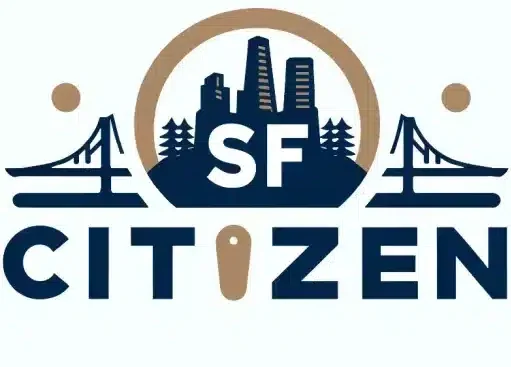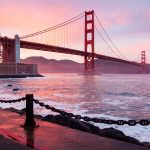The Benicia-Martinez Bridge, a vital 1.7-mile link spanning the Carquinez Strait, connects Solano and Contra Costa counties in the San Francisco Bay Area. This critical piece of infrastructure not only facilitates the movement of people and goods but also plays a significant role in the region’s broader transportation network.
In This Article
Key Points
- The Benicia-Martinez Bridge, also known as the George Miller Jr. Bridge, is a crucial connection between Solano and Contra Costa counties on Interstate 6801.
- It features Northern California’s first open road tolling system, enhancing traffic flow and reducing congestion.
- The bridge accommodates vehicular traffic, including a dedicated path for pedestrians and bicyclists, promoting sustainable transportation options.
Historical Overview and Significance
The Benicia-Martinez Bridge’s history dates back to 1962 when the original deck truss bridge was constructed to replace the last automotive ferry service in the San Francisco Bay Area. In 1975, the bridge was named the George Miller Jr. Memorial Bridge after California state legislator George Miller Jr.. The bridge’s capacity was further expanded in 2007 with the opening of the Congressman George Miller Benicia-Martinez Bridge, named after U.S. Congressman George Miller, son of George Miller Jr..
Architectural and Engineering Marvel
The Benicia-Martinez Bridge showcases a unique combination of truss and segmental bridge designs. The 1962 bridge features seven 528-foot spans and 138 feet of vertical clearance, while the 2007 bridge is a 1.7-mile segmental bridge. The introduction of open road tolling in 2007 marked a significant innovation in traffic management, allowing motorists to pay tolls without stopping.
Seismic resilience and safety are paramount considerations in the bridge’s design. The new eastern span of the Bay Bridge, for example, is designed to withstand major earthquakes by incorporating flexible structures that can absorb and dissipate seismic energy.
Role in Public Transportation and Connectivity
The Benicia-Martinez Bridge is an integral part of the Bay Area’s multimodal transportation network. It accommodates pedestrians and bicyclists, promoting non-motorized transportation options across the Carquinez Strait. Tolling information for the bridge can be found on the Bay Area FasTrak website, which includes details on toll rates and payment methods.
Major Roads and Bridges: The Broader Network
Interstate 680, which traverses the Benicia-Martinez Bridge, is a key corridor linking major urban centers and suburban communities in the Bay Area. The bridge is part of a comprehensive transportation ecosystem that includes neighboring bridges and infrastructure, such as the Carquinez Bridge.
Environmental and Community Impact
The Benicia-Martinez Bridge project has incorporated efforts to minimize its environmental footprint and promote sustainability. The bridge also serves as a catalyst for local initiatives and community development. A vista point on the north side of the span provides a scenic overlook of the Carquinez Strait and Mount Diablo, enhancing public spaces and access to natural beauty.
Challenges and Controversies
The construction of the new Benicia-Martinez Bridge faced challenges, including delays and significant cost overruns. Balancing revenue needs with public accessibility has also been a point of discussion in tolling system debates and adjustments. Ongoing maintenance and modernization efforts are crucial to ensuring the bridge’s long-term viability and safety.
FAQ
What are the toll rates for the Benicia-Martinez Bridge, and what payment options are available?
Toll rates for the Benicia-Martinez Bridge vary depending on the type of vehicle and payment method. As of 2023, the toll for passenger cars is $7 with a FasTrak account or $8 for cash or other payment methods. Carpools, motorcycles, and designated clean air vehicles may be eligible for discounted tolls. More information on toll rates and payment options can be found on the Bay Area FasTrak website.
How does the open road tolling system work on the Benicia-Martinez Bridge?
The open road tolling system on the Benicia-Martinez Bridge allows motorists to pay their tolls without stopping. Overhead antennae linked to a computer system read vehicle toll tags and deduct tolls from drivers’ prepaid FasTrak accounts. Cameras record license plate numbers of vehicles not equipped with FasTrak, and violations are sent to drivers who don’t pay the toll.
Can pedestrians and bicyclists use the Benicia-Martinez Bridge, and if so, how?
Yes, the Benicia-Martinez Bridge accommodates pedestrians and bicyclists. The original 1962 bridge has a dedicated path for pedestrians and bicyclists on the southbound span. Cyclists and pedestrians wishing to cross the bridge can park their cars at the vista point on the north side of the span and access the pathway from there.
What is the significance of the Benicia-Martinez Bridge in the Bay Area’s transportation network?
The Benicia-Martinez Bridge is a critical link in the Bay Area’s transportation network, connecting Solano and Contra Costa counties and facilitating the movement of people and goods across the region. It is part of Interstate 680, a major corridor linking urban centers and suburban communities. The bridge also serves as a vital conduit for emergency vehicles and personnel in the event of a major earthquake or disaster.
Are there any future projects planned for the Benicia-Martinez Bridge to address traffic or environmental concerns?
While no specific future projects are mentioned in the provided sources, ongoing maintenance and modernization efforts are crucial to ensuring the bridge’s long-term viability, safety, and efficiency. Addressing traffic demands and environmental considerations will likely remain a priority for the Benicia-Martinez Bridge and the broader Bay Area transportation network in the years to come.

